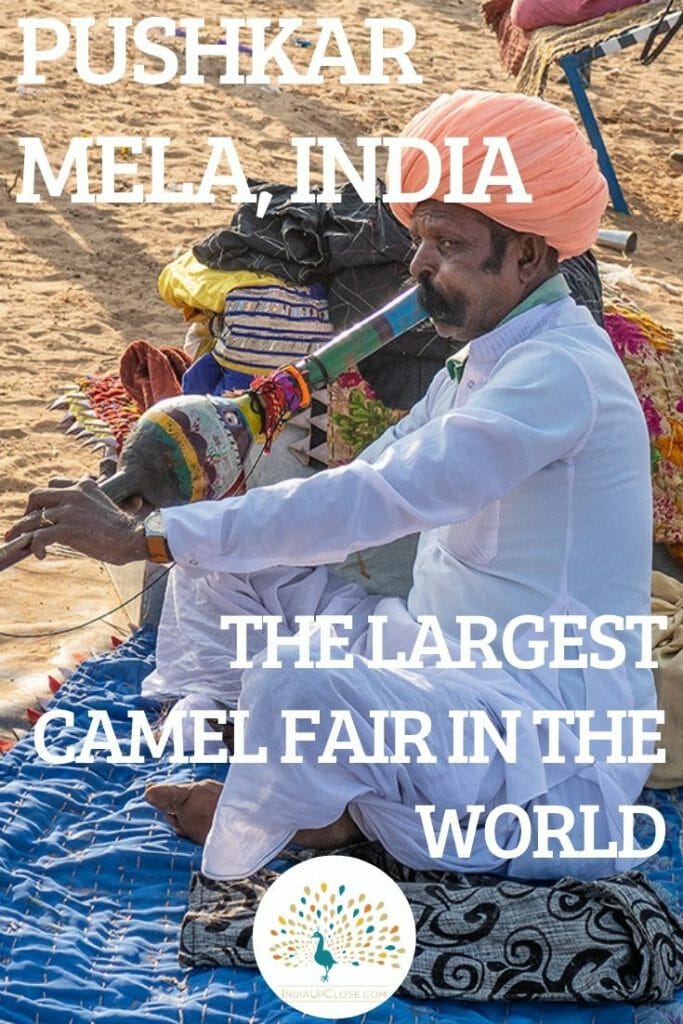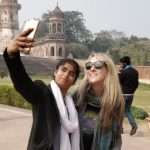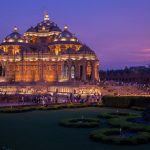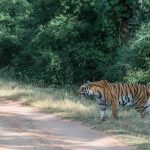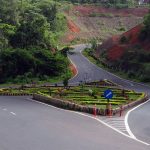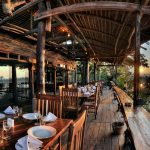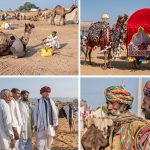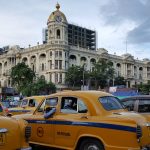This post may contain affiliate links. We may earn money or products from the companies mentioned in this post. For more info, please read our full Disclosure here.
Pushkar Mela Photo Essay: The Largest Camel Fair in The World
Every year, when the November moon is full, a camel fair takes place in Pushkar Mela, a small desert town in Rajasthan, India. For centuries, the fair has been attracting camel, horse, and cattle traders to buy and sell from tens of thousands of animals crowding the grounds just west of the town. It is one of the greatest tribal gatherings in the world.
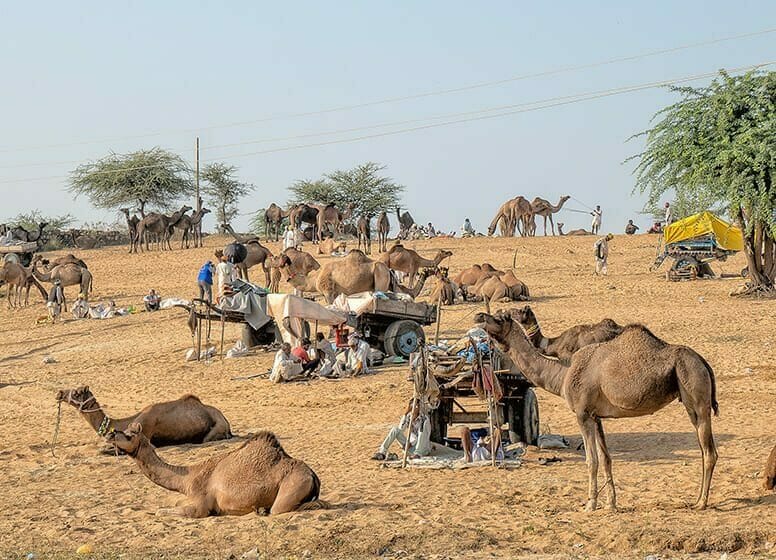
A Little Something About Pushkar Mela
I was there for the camels. And the photography.
Pushkar lies on a sandy plain beside a lake surrounded on three sides by mountains. It’s a place of shifting dunes, relentless heat, and little moisture — the Thar Desert.
It is also a place of holy pilgrimage during the Kartik Poornima(full moon) Festival. Hindus flock to bathe in the sacred lake, said to have been created by Lord Brahma when he dropped a lotus flower. The faithful cleanse their sins here and make offerings at some of the 400 temples, one of which is dedicated to Brahma, the lord of creation.
Today, the Pushkar Camel Fair is also a major cultural and tourist attraction because, over the centuries, events have been added as well as vast, bustling bazaars. The town swells by about 400,000 visitors during the festivities and beds are scarce.
Dirty. Hot. Smelly. Loud. Crowded. Colorful. And Pulsing With Energy. Pushkar is India in The Raw….
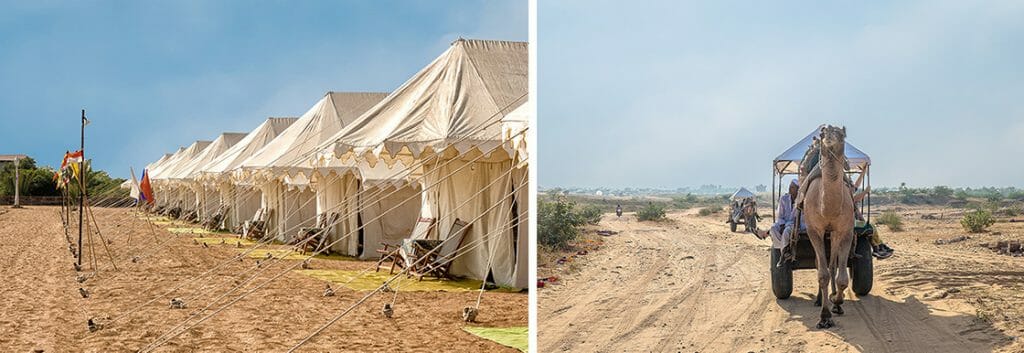
I’m up early to catch my camel-cart shuttle outside the gate of my luxurious camp about half a mile west of the fairgrounds. It’s uncomfortable as we jolt along on over-inflated tires over slippery, rutted sand. My driver hangs tight to the tail of his camel.

He drops me near the main street leading to town. I can smell the camels on the hill behind the stalls. It’s not very crowded at 8:30 am.
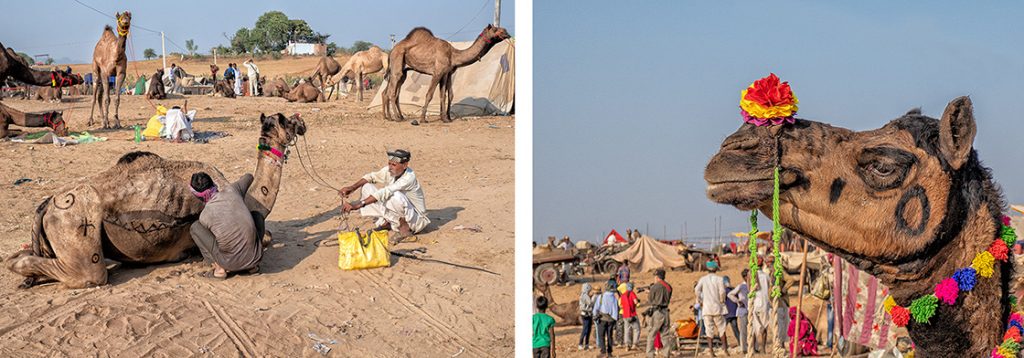
I wander around the camel camps where owners are shaving, painting, and decorating their animals for the beauty contests.
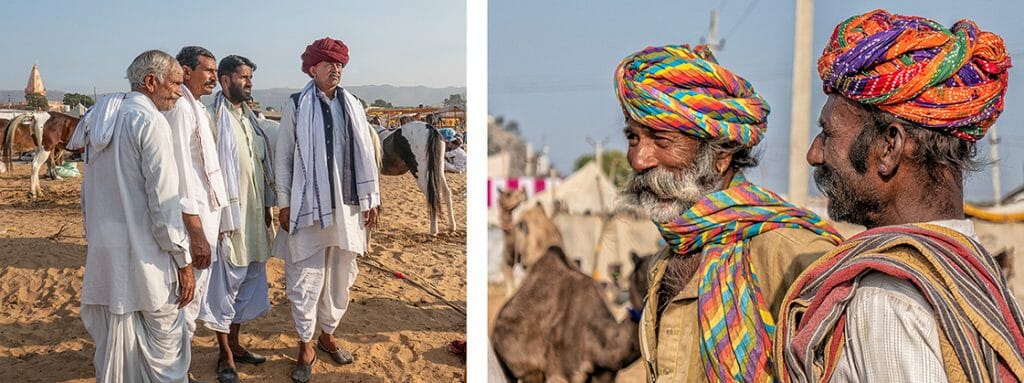
Traders assess camels, gossip, and haggle.

The local transport for tourists and locals is camel carts and the owners compete for fares.

Musicians play haunting tunes on strange instruments.
I’m uncomfortably hot by 10:30am and glad I wore shoes, not sandals. But the sand is filling my shoes with every step — it’s a losing battle.
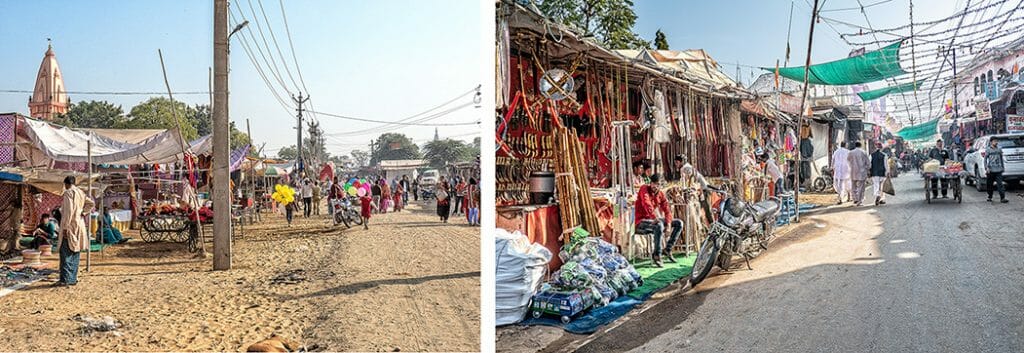
The Vibe Around the Stalls
I amble down the street heading for the town, looking at the temporary stalls set up on either side. Just about anything is for sale here — bridles for camels and horses, pots and pans, pom-poms galore, bells, swords and daggers, and curries.

As I pass, vendors are setting up; aromas of food cooking on open fires waft past my nose.
Beggars beg. Tourists browse the handicrafts. Music blares from a dozen loudspeakers. And crowds begin to push and shove. Peddlers harass visitors to buy their shoddy souvenirs. Motorbikes weave around pedestrians. Carousels and a Ferris Wheel start to turn.

And a two-ton water buffalo waddles through the town with his handlers hoping to impress before the judging.
Mothers shop. Babies cry. Men twirl their long mustaches for the competition, and tourists learn to tie turbans. I head down to Pushkar Lake.

It’s cooler and less dusty here on the ghats where women bathe. I sit on the steep steps and watch awhile, marveling that the fair today is much the same as it was centuries ago, except for the motorcycles and mobile phones.
The Racing Camels
After a rest, I head to the stadium to watch the day’s action. I can sit in the stands or even walk around inside the arena with the animals.
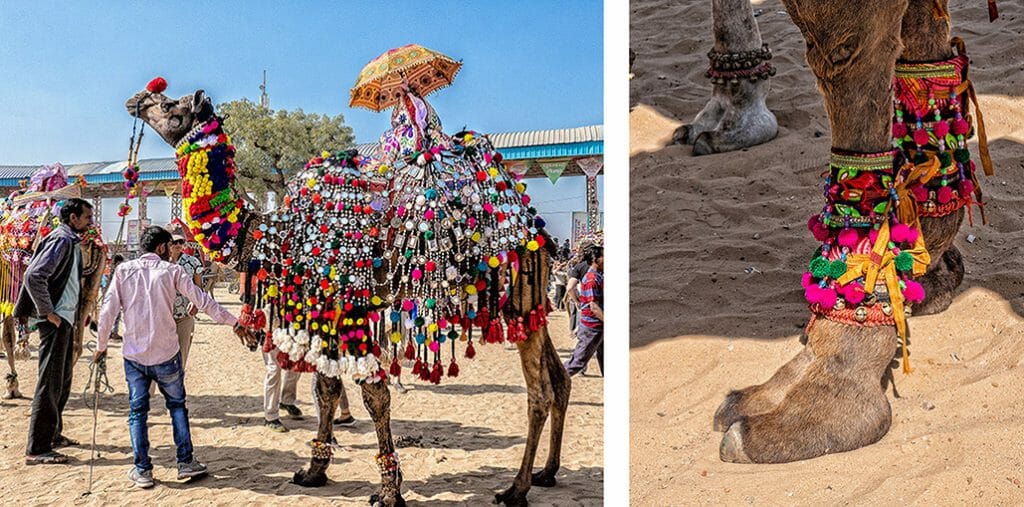
Judges examine the camels in the best-decorated competition; owners fiddle with their pom-poms, anklets, and necklaces. I discover that the camel’s feet are the size of dinner plates.

Jockeys warm-up for the races. Horses dance for the crowds.

Teen riders show-off!

Owners parade their thoroughbred Marwar horses with curly ears.

Performances At the Fair
Snake charmers perform for a fee. Acrobats tumble and young tightrope walkers wobble. In the stands, visitors and locals watch intently and cheer when winners are announced.

Camels look down snootily while others wait patiently under the fierce sun.
When shadows lengthen and the sun’s slips, smoke fills the air from hundreds of cooking fires. I’m dirty and tiring now. But there’s more to experience in the camel camps — sunset.
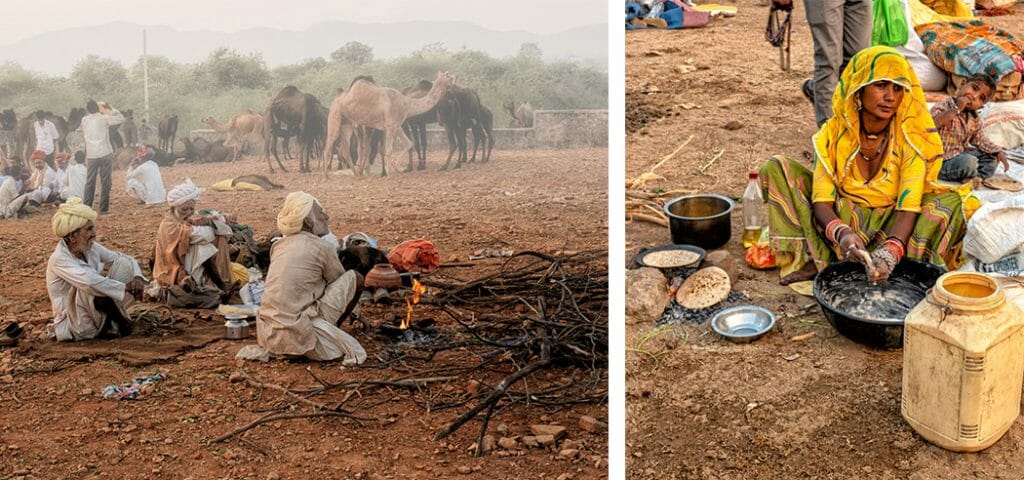
Men smoke in groups awaiting dinner. Women cook on their haunches on the sand.

Camels lurch to their knees to eat. Camel drivers roll up on blankets on or under their carts

As darkness falls, I wend my way to my camel shuttle. My head rings with noise; nose is overloaded; my camera, fit to explode.

Exhaustion means sleep comes hard and fast under two quilts — it’s 9:30 pm and I’m cold.
MORE INDIA PHOTOS: http://www.flickr.com/beaconlit/albums/72157677742612898
Useful Links for the Pushkar Camel Fair
- India Tourism: https://www.tourism-of-india.com/
- Rajasthan Tourism:http://www.tourism.rajasthan.gov.in/
- Pushkar town: http://www.tourism.rajasthan.gov.in/pushkar.html
- Pushkar Camel Fair: http://www.pushkarcamelfair.com/
- Brahma Temple:www.tourism-of-india.com/brahma-temple.html
- Explore! (my tour company): www.explore.co.uk
- Royal Desert Camp: http://hotelpushkarpalace.com/royal-desert-camp/ (I stayed here)
Helpful Tips for Pushkar Mela
- Dates of the fair vary every year according to the date of November’s full moon. In 2019 it will run November 4-12.
- Pushkar is 88 miles (142kms) by road southwest of Jaipur, the closest big city.
- There are no direct trains or buses to Pushkar, changes are required. By rail, it takes about 3 hours and costs USD$4.63.
- The best way to attend is with an organized tour. I did it with a small-group tour company called Explore!, which I had used three times before. Book early tours with the Pushkar fair sell out very fast — I booked nearly two years in advance.
- Arrive at the beginning of the fair before the traders fade back into the desert when their business is concluded. The major events take place during this time.
- Accommodation runs from cheap hostels to luxurious desert camps. There are no western hotel chains in Pushkar.
- Weather is hot in November here — 86F+ (30C+) in daytime, cold at night. Incredibly dry and very little shade. Carry lots of bottled water for your explorations.
Even More Helpful Tips for Your Trip
- The sand can be deep and loose, so walking is an effort. It’s dirty too, so wear enclosed shoes, never sandals.
- To do Pushkar justice in a couple of days, you need to be able to walk at least two miles a day, if not more. If you’re here for longer, you can pace yourself better.
- Although street food is tempting, our tour leader would not let us try it.
- Photography is incredible here. I rarely had to ask permission and never had to tip anyone who posed for me, though it does happen.
- Beggars are a fact of life in India and surge around tourists. They can be a real pest. Our tour leader taught us to never look at them, stay silent (never even say no), and turn your back on them. It worked well.
Pushkar Mela Photo Essay: The Largest Camel Fair In The World was written and photographed by Julie H. Ferguson. Read more about Julie here.
ALL IMAGES: © Photos by Pharos (Julie H. Ferguson) 2018. All rights reserved.

